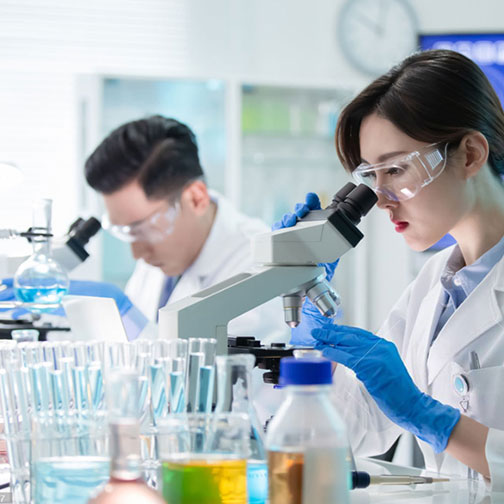Nicotinamide adenine dinucleotide (NAD+) and also its reduced kind (NADH) are ubiquitous molecules in the body, which play essential duties in energy metabolism, as they work as hydride-accepting and hydride-donating coenzymes throughout mitochondrial oxidative phosphorylation. Aside from its role as a redox cofactor, during the last years NAD+ has arisen as the essential substratum for a number of protein family members, such as the sirtuin (SIRT) family members of healthy protein deacetylases, poly( ADP-ribose) polymerases, and ADP-ribose cyclases. With their downstream actions, these healthy proteins join more than 500 enzymatic reactions and manage mostly all major biological processes in cells. This constant chemical use of NAD+ is counteracted using afresh synthesis from nutritional tryptophan, or with its salvage from precursors. In the Preiss-Handler path, the NAD+ forerunner nicotinic acid (NA) is exchanged NAD+ in a three-step enzymatic procedure led by the nicotinic acid phosphoribosyltransferase (NAPRT), the nicotinamide mononucleotide adenylyl transferases (NMNATs), as well as the NAD+ synthase (NADS). One more recycling path makes up intracellular nicotinamide (NAM) phosphoribosylation or nicotinamide riboside (NR) phosphorylation into nicotinamide mononucleotide (NMN), a procedure performed by nicotinamide phosphoribosyltransferase (NAMPT) or nicotinamide riboside kinases (NRKs), specifically. NMN is then directly converted to NAD+ by the NMNATs. When given externally, NMN can additionally function as an NAD+ forerunner. To attain this, NMN first needs to be transformed extracellularly to NR by the ectoenzyme 5 ′- nucleotidase CD73, after which NR is carried into the cell by the equilibrative nucleoside transporters (ENTs) as well as metabolized to NAD+ by means of NRKs. Really recently, it has actually likewise been reported that NMN can be integrated right into cells via the Slc12a8-specific transporter, at the very least in mouse tiny intestine.

PRODUCTS AND ALSO METHODS
Enzyme preparation and also NMNH synthesis
The pyrophosphatase from Escherichia coli pressure K12 (EcNADD, Uniprot code: P32664) was duplicated right into pET24b vector and expressed in E coli Rosetta 2 DE3 pLysS at 25 ° C and also 0.25 mM of isopropyl-β-thiogalactopyranoside (IPTG, Sigma-Aldrich, St. Louis, MO, United States) for 16 hrs. Healthy protein filtration was executed in a HiTrap IMAC column (GE Health care) in 50 mM of Tris-HCl pH 7.5 containing 300 mM of NaCl in a gradient from 10 to 250 mM of imidazole adhered to by desalting in a HiPrep desalting column (GE Health care, Chicago, IL, USA). Conversion of NADH into NMNH as well as AMP was achieved by incubation of 50 µg/ mL EcNADD with 5 mM NADH in 50 mM Tris HCl pH 8.0 having 0.5 mM MnCl2 in an overall volume of 50 mL for 45 mins at 37 ° C. NADH conversion was examined by HPLC making use of a reverse-phase C18 250 × 4.6 mm column (Phenomenex, Torrance, CA, USA) and also a mobile phase consisting of 20 mM ammonium acetate pH 6.9 performing at 1 mL/min for 15 minutes. Under these chromatographic conditions, retention times for NMNH and AMP were 5.5 and 7 mins, respectively.
NMNH purification
Chromatographic separation of NMNH from AMP was accomplished by C18 reverse-phase chromatography. Fractions having pure NMNH were vaporized until dryness in a rotating evaporator. The resulting powder was redissolved and also desalted by dimension exemption chromatography in distilled water. After the last desalting action, samples were freeze dried out to acquire NMNH as an amorphous yellow powder.
Identification of NMNH by nuclear magnetic vibration
The proton and also 31P NMR ranges were recorded at 25 ° C on a Bruker (Billerica, MA, United States) Avance 400 (400 MHz). 1H chemical shifts were reported in ppm relative to the vibration of HOD (δ = 4.8 ppm) and also 31P chemical changes were on the surface referenced to 85% of H3PO4. J worths are given in Hz.

Cell society and also supplementation with NAD+ precursors
AML12, HepG2, SY5Y, HeLa cells, and human skin fibroblasts were cultured in 12-well plates in Dulbecco’s changed Eagle’s tool (DMEM, Life Technologies, Carlsbad, CA, United States) supplemented with 10% of fetal bovine serum (FBS, BioWhittaker, Basel, CH), 100 U/mL of penicillin, as well as 10 mg/mL of streptomycin (Life Sciences, Waltham, MA, U.S.A.). T37i cells were cultured as well as distinguished as previously defined.37, 38 Conditionally Commemorated Proximal Tubular Epithelial Cells (IM-PTECs) were created as formerly described39 and also cultured at 33 ° C in HK2 medium40 supplemented with 10 ng/mL IFN-γ (ProSpec, Rehovot, IL, United States) and preserved at 37 ° C without IFN-γ for an added week prior to the beginning of the assay, causing loss of SV40 expression.41 Otherwise suggested, supplements with PBS (car), NMN (Carbosynth, Compton, UK), or NMNH was made at the concentrations and also times indicated in FBS-free medium.
Chemical restraint of the various enzymes involved in the recycling of NAD+ precursors was made using the adhering to reagents and focus: (E)- N- [4-( 1-benzoylpiperidin-4-yl) butyl] -3-( pyridin-3-yl) acrylamide (FK866; 2 µM; Sigma-Aldrich), adenosine-5 ′- [( α, β)- methylene] diphosphate (AOPCP; 500 µM; Jena Biosciences, Jena, DE), dipyridamole (DIPY; 20 µM; Sigma-Aldrich), 5-( 3-Bromophenyl) -7- [6-( 4-morpholinyl) -3- pyrido [2,3-d] pyrimidin-4-amine dihydrochloride (ABT702; 10 µM; Tocris Biosciences, Bristol, UK), as well as gallotannin (100 µM; Sigma-Aldrich). Cells were incubated for 1 hr in the presence of the matching inhibitor prior to supplementation with this focus of NMNH or PBS (car).
Practicality assay
AML12 cells were cultured in DMEM in a 96-well plate as well as supplemented with different focus of NMN or NMNH. After 24 hr, cells were cleaned with PBS and also 150 µL of MTS reagent (Abcam, Cambridge, UK) was included in each well. After incubation at 37 ° C for 4 hrs, absorbance was gauged on a spectrophotometer at 490 nm.
Contact Us:
Shenzhen Hygieia Biotechnology Co., Ltd
Location: 123 Fifth Avenue810,Bozhi center,
Chentian Industrial Area, Xixiang,
Bao’an District, Shenzhen
Call Us: +86-755-27208059
Email: info@hygieia.com.cn
Website: https://www.hygieiabiotech.com/products/nmnh-powder/
External Links: